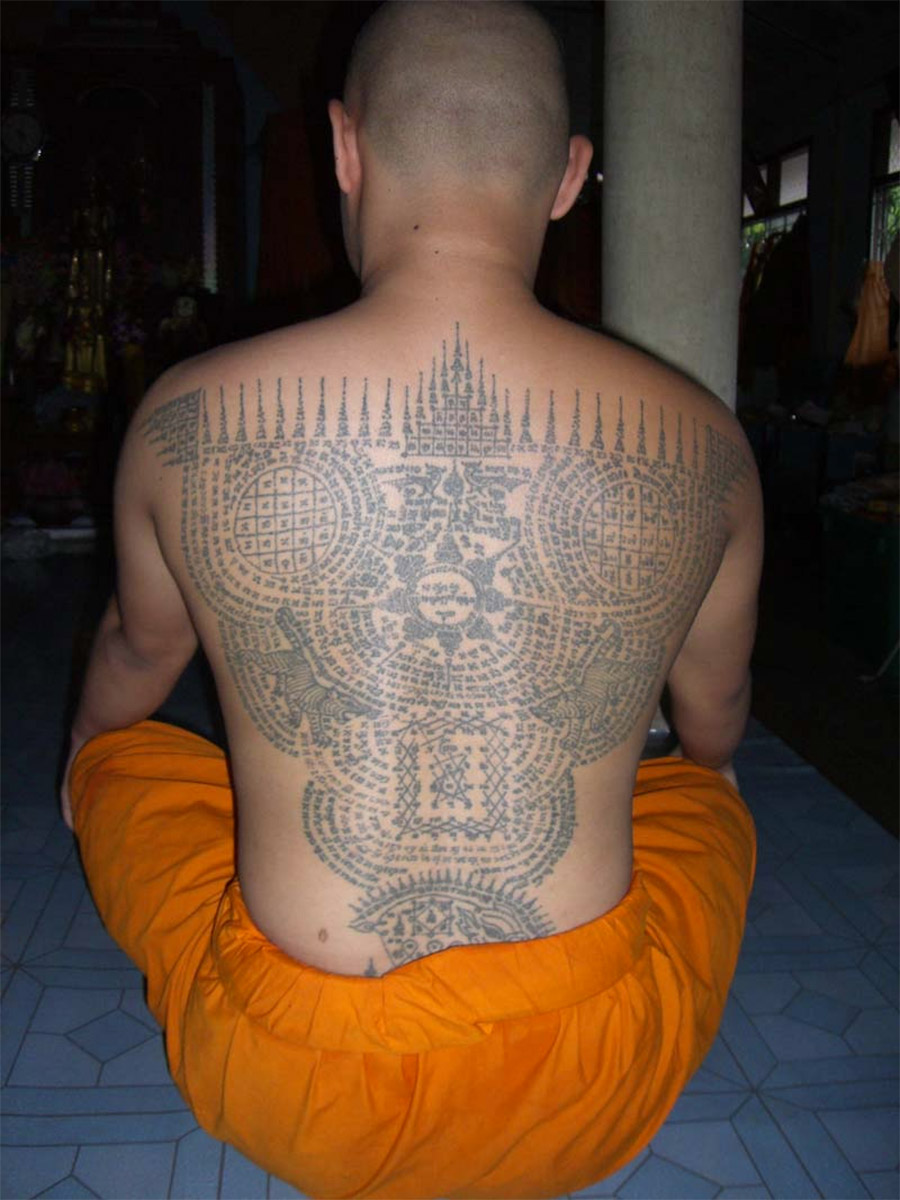
Sak Yant Tattoo and Buddhist Tattoos in Thailand
Getting a Sak Yant Tattoo in Thailand. Over 40 people watched in silence as a famous Thai monk repeatedly penetrated my flesh like a sewing machine. His Sak Yant needle sent waves of searing pain into my back. Traditional Sak Yant (also called Sak Yan, or Yantra) tattoos are hand-etched onto the skin using ancient geometric designs mixed with.

Sak Yant Tattoo Arm Viraltattoo
Final Thoughts on Getting a Sak Yant Tattoo. A Sak Yant isn't just another tattoo - it is a profound, spiritual token of protection. Treasure it as a reminder of your time in Thailand and the Thai Buddhism wisdom your master imparted. Let this sacred geometry guide you on your life path as a living source of magic and blessing.

A full back authentic Sak Yant designed and done by a very gifted monk who has been practicing
Sak Yant Gao Yord by Luang Pi Pant - this was my (Ajarn Spencer) first Sak Yant tattoo, which is traditional and according to the Dtamra Sak Yant, for this is the Yant Kroo (master Guru yantra) of Luang Por Phern, and should indeed be the first tattoo you recieve before any other Sak Yant.
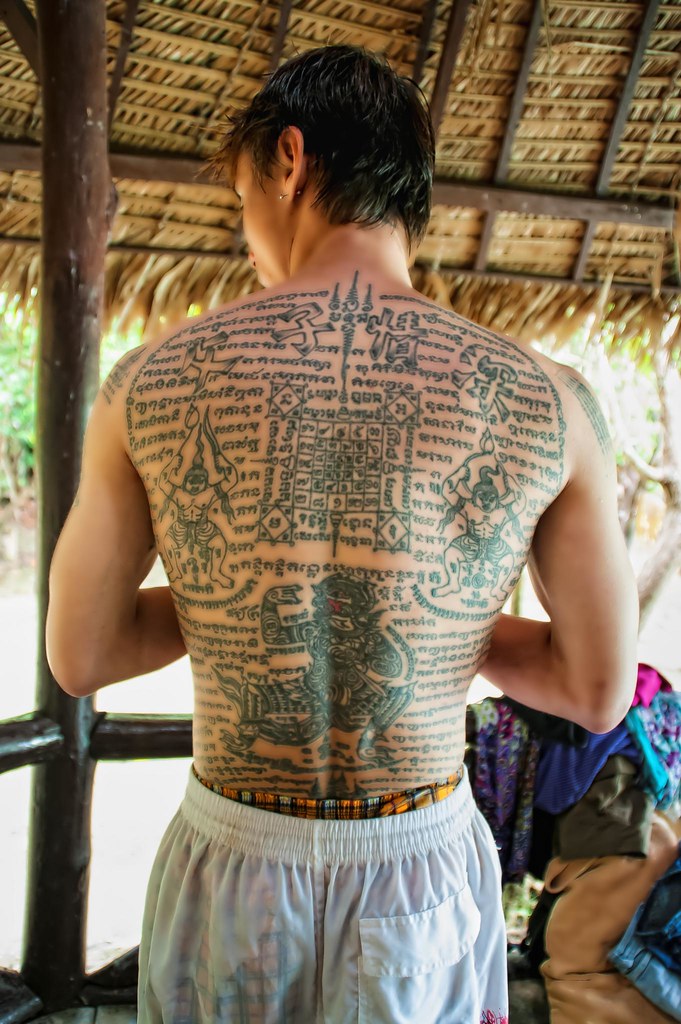
Sak Yant Tattoo Thailand a photo on Flickriver
What is a Sak Yant tattoo? Although they are usually called "Sak Yant" tattoos, they can also be referred to as "Thai Traditional" or "Bamboo" tattoos. Sak in Thai means Tattoo, and Yant is the Thai pronunciation for the Sanskrit word Yantra - a mystical diagram used in meditation.

Thai Sak Yant Tiger Tattoo Sak yant tattoo, Unique tattoos, Inspirational tattoos
A Sak Yant tattoo is a traditional Thai tattoo that holds spiritual and cultural significance. It's often associated with protection, luck, and other beneficial attributes. The designs are traditionally etched by a Sak Yant master, known as an Ajarn, using a hand-poked method with a bamboo or steel rod.

40 Rare Sak Yant tattoos by Thai Monks (No Ordinary Ink Tattoo)
Takarb (Centipede) Sak Yant Tattoo Design and Meaning. Yant Takarb or "Centipede Yant" is a design that represents practicality, sensibility, balance, invulnerability and protection. The centipede has a long body and a lot of legs which represents protection. The two moustaches represent apperception.
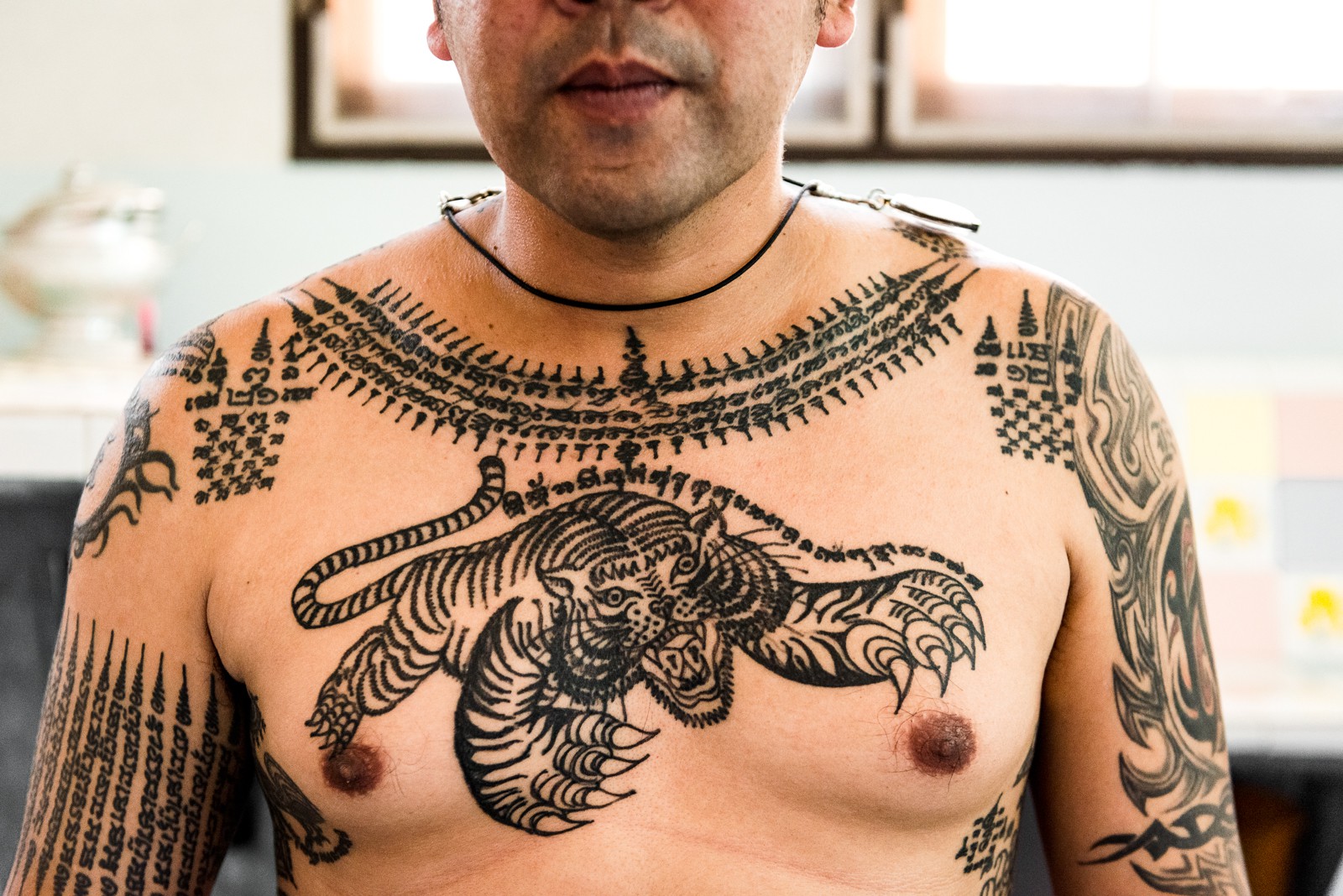
Tattoo Thailand Sak Yant Tattoo Blessed By A Monk In Thailand My Experience / Amazing thai
In this context, sak means "to tap" or "to tattoo", and yant means "yantra", which is originally a Sanskrit word. Sak Yant tattoos are a traditional Thai form of tattooing, involving sacred geometrical designs. They are incredibly intricate, and each element will have a specific meaning for the wearer. These tattoos have very strong ties to.
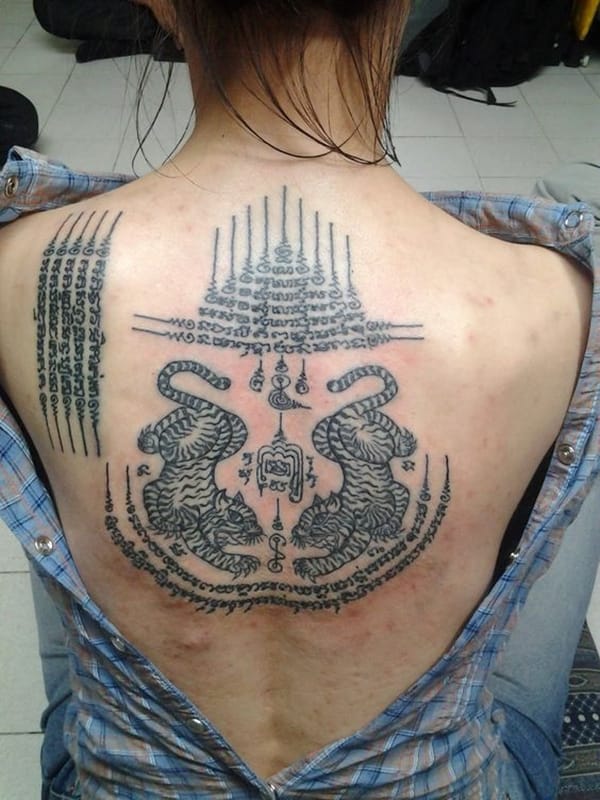
40 Rare Sak Yant tattoos by Thai Monks (No Ordinary Ink Tattoo)
a harmonizing Sutra is used when a Yant has been made with a mistake, or it's wearer has transgressed against the rules of wearing the yant (see rules of abstention)all the Yant designs used in the pantheon of Sak yant (for indeed many yant are not used as tattoos, rather for many other specialized purposes), can be divided into six or seven.
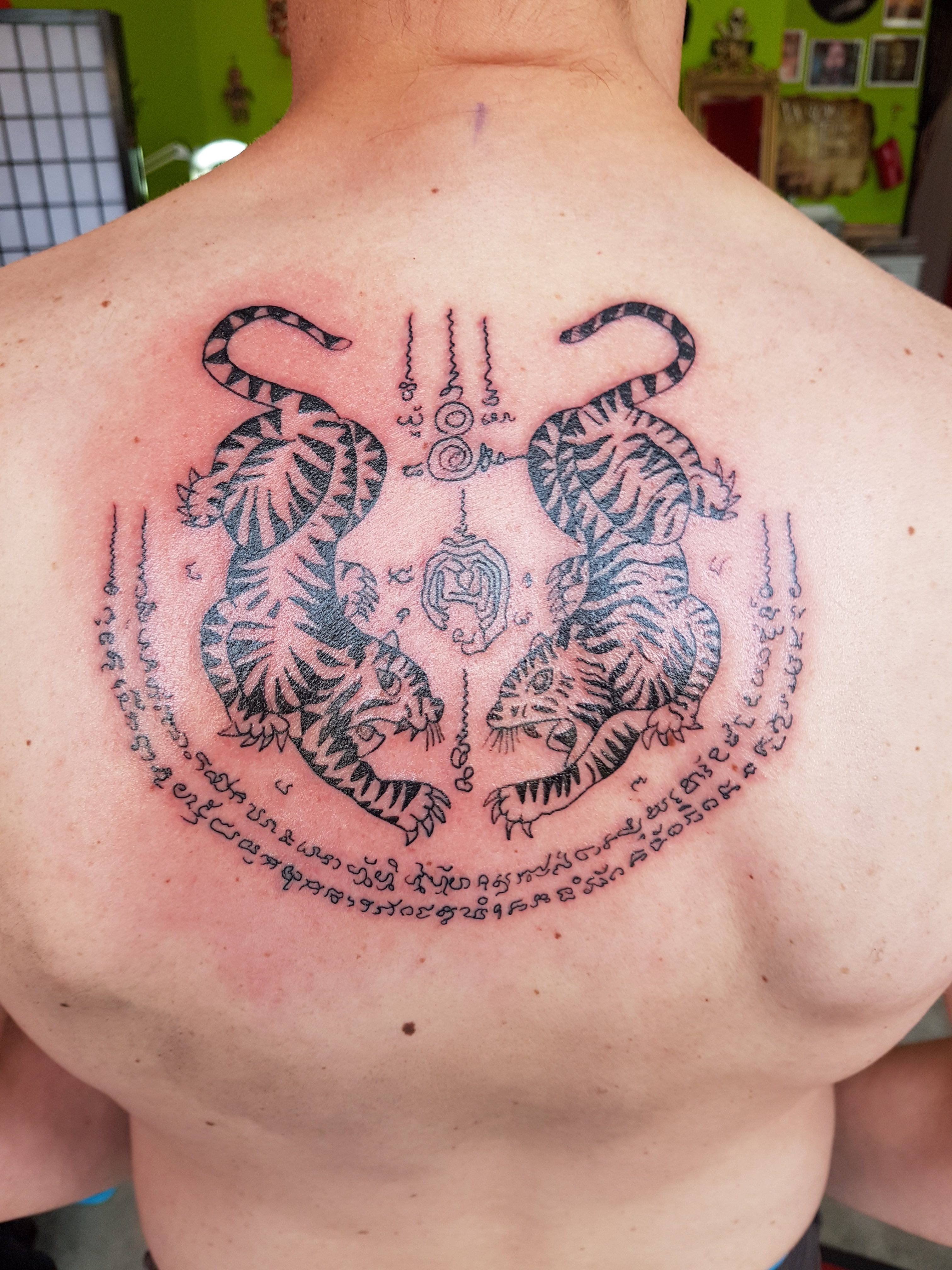
Sak Yant Tattoo Tattoostudio Panicroom
When it comes to Sak Yant tattoos, there's evidence of their use in the Khmer Empire (modern-day Cambodia) dating back to the 9th century, giving them a long and proud history. While the tattoos might look cool or edgy, receiving a Sak Yant tattoo was done for reasons other than those of vanity. With their supposed magical powers, warriors.

Tatouage Sak Yant avec un lotus
The ancient tradition of tattooing Sacred Yant is probably at least one to two thousand years old.The oldest definite historical evidence of Sak Yant being practiced in Thailand dates back to around the times of King Naresuan Maharaj, around the time that the kingdom of Ayuttaya was still in it's golden age.The warriors were tattooed with Yant and also wore "Suea yant" (yant shirts, that.
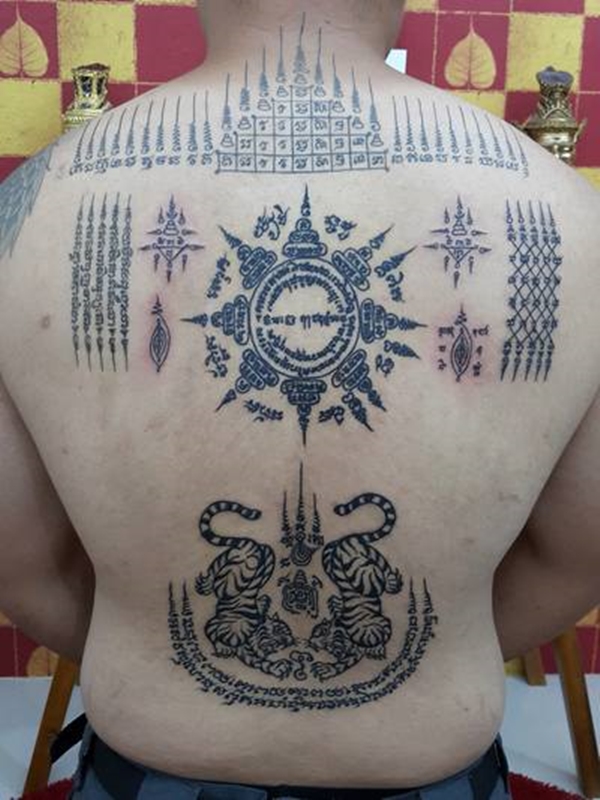
40 Rare Sak Yant tattoos by Thai Monks (No Ordinary Ink Tattoo)
Inside the Thai Temple Where Tattoos Come to Life. Wat Bang Phra, a temple in central Thailand, is renowned as a center for sak yant, a style of tattoo art believed by some to convey protective.

sak yant Sak yant tattoo, Thai tattoo, Tattoos
Sak Yant Tattoos, a living tradition carried through centuries. Intricate lines and geometric patterns swirling into meaningful designs, punctuated by ancient scripts and are believed to have spiritual power, the end result is not just an ordinary tattoo, but a sacred piece of art deeply embedded with spiritual significance.. Originating in Southeast Asia, Sak Yant tattoos, also known as.

Done traditional sak yant tattoo by Ajarn bttattoo bttattoothailand
Yantra tattooing. Yantra tattooing or Sak Yant is a form of tattooing using Indian yantra designs. It consists of sacred geometrical, animal and deity designs accompanied by Pali phrases that are said to offer power, protection, fortune, charisma and other benefits for the bearer.

37+ Sak Yant Tattoo Designs And Meanings
In other words, whereas a normal tattoo may last a lifetime, a sak yant may last longer. A sak yant master inks a centuries-old design at Wat Bang Phra in central Thailand. | Photograph by Lillian Suwanrumpha / Getty Images. M any of these details can get lost in translation for Western wearers —myself included. During a 20-hour layover in.

Gaya Terbaru 33+ Pantangan Tattoo Sak Yant
The sak yant is a representation of mystical Thai Buddhism, also known as Tantric Theravada, in the form of a tattoo. So to understand sak yants, you must first understand this form of mysticism that connects the body, cosmos and a higher power together. Locals typically brand these tattoos because they are believed to give protection and good.
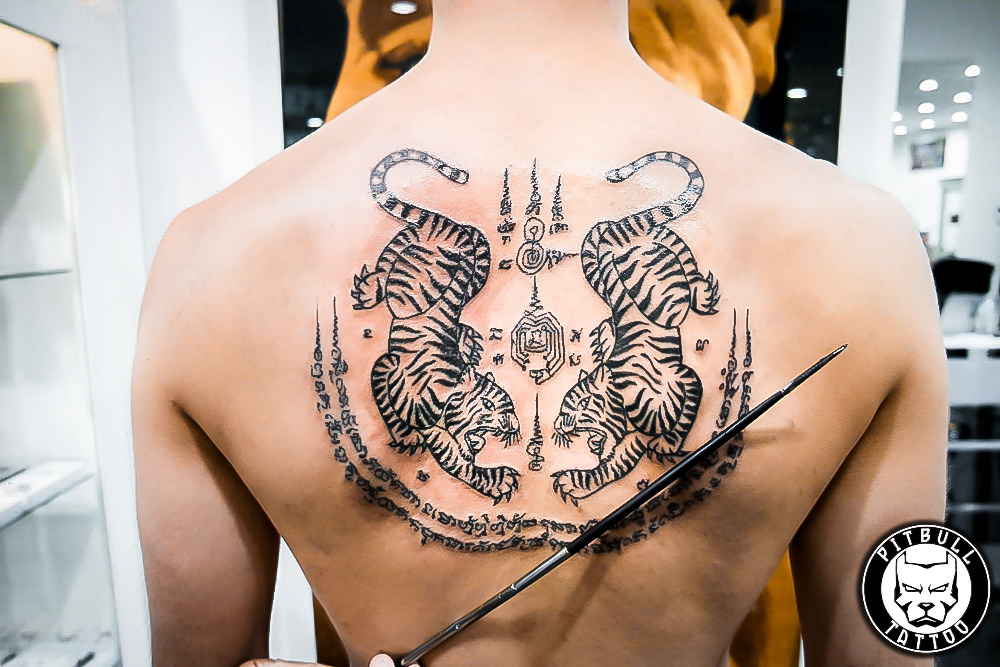
Sak Yant Tattoos
Sak yant tattoos are more than just intricate designs etched onto the skin; they carry deep spiritual meaning, cultural significance, and a connection to centuries-old traditions. These sacred tattoos serve as powerful symbols of protection, strength, enlightenment, and love. Rooted in Thai culture and influenced by Buddhism, they are a.